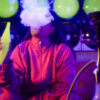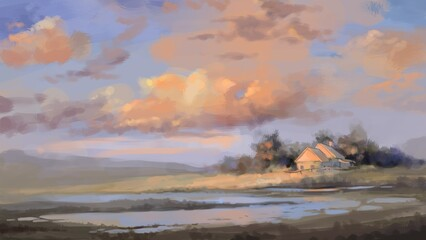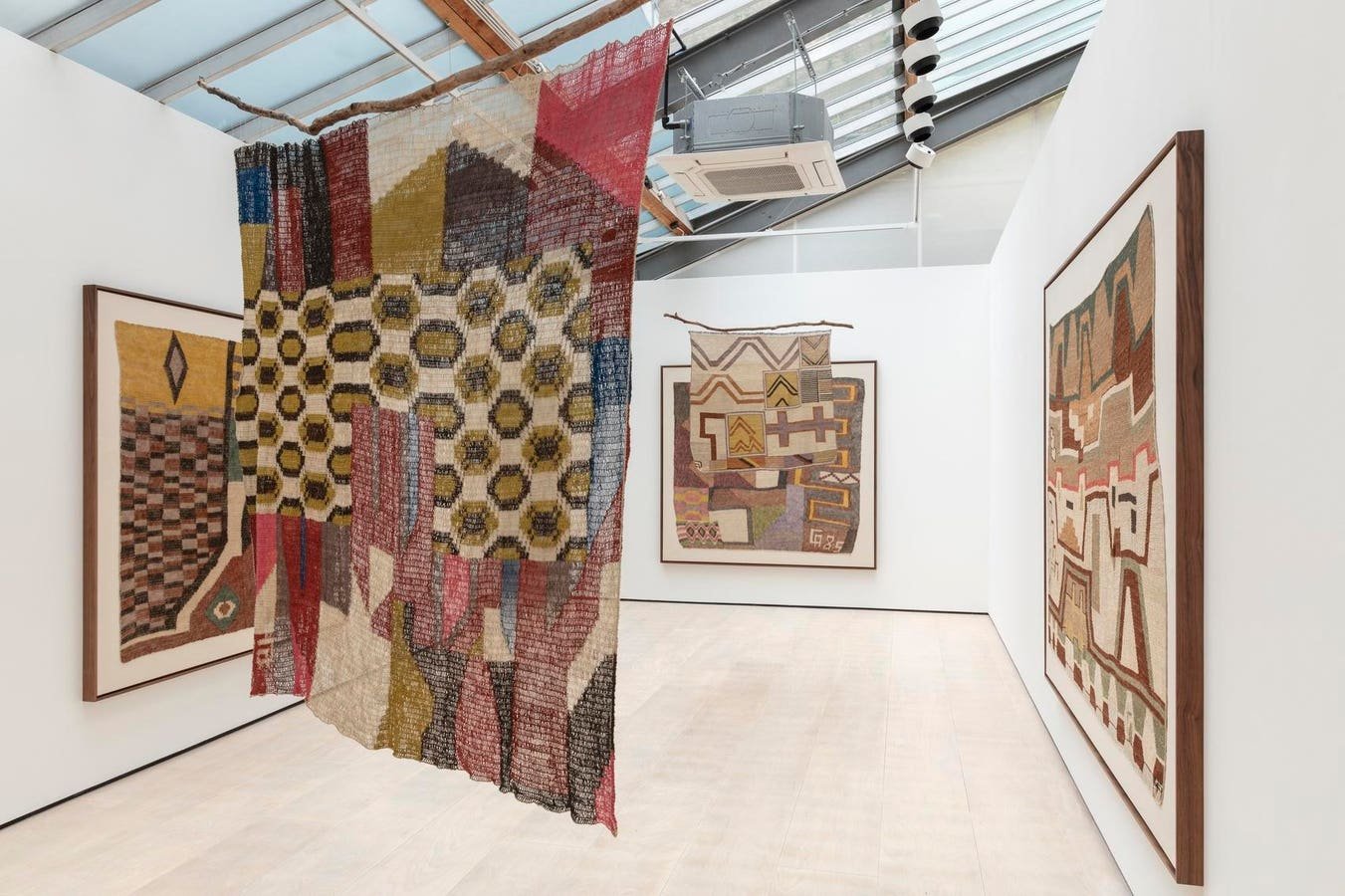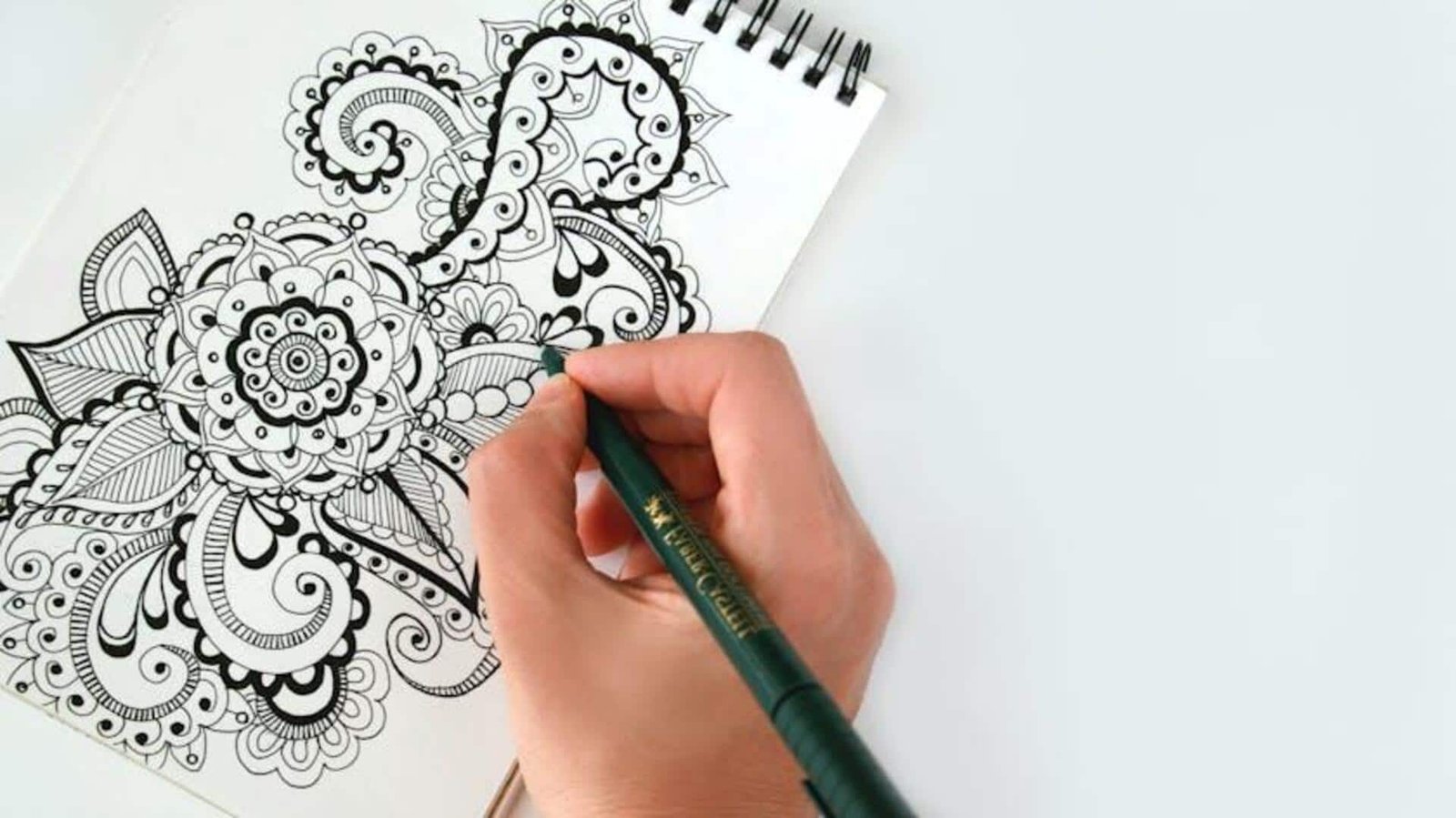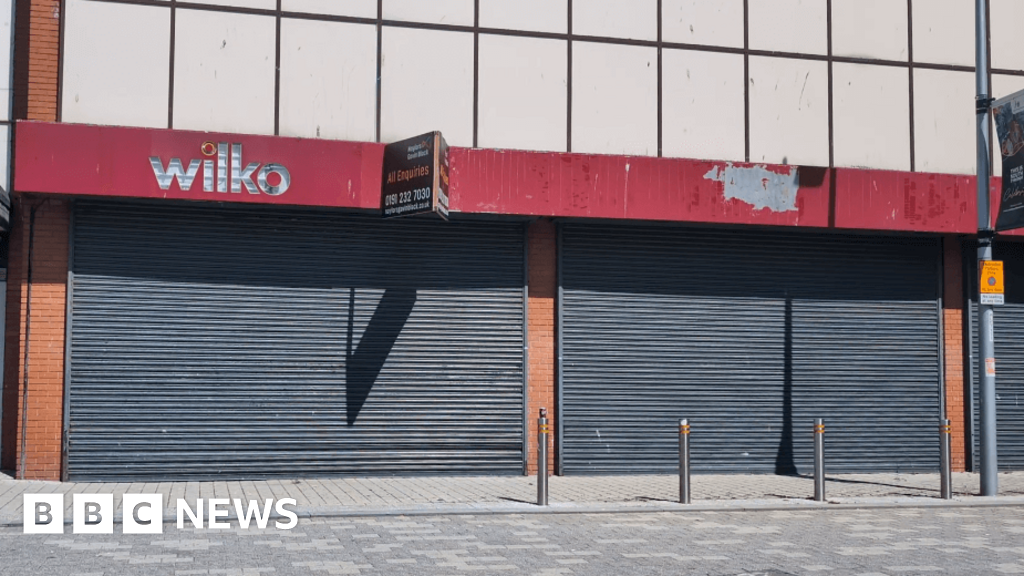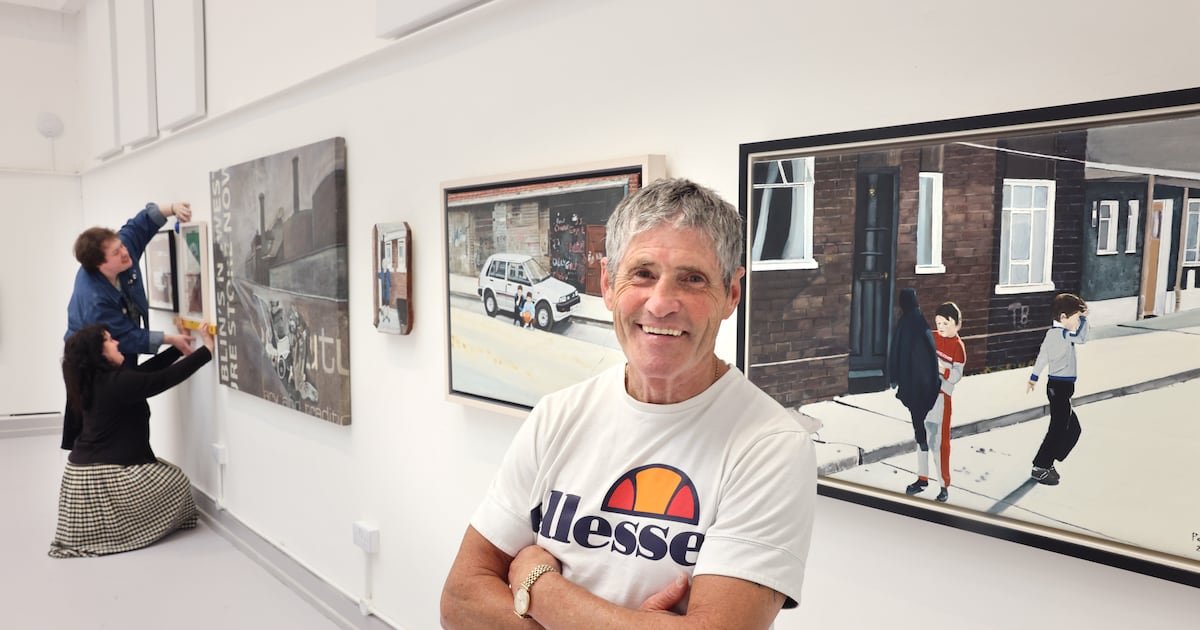Established in 1837, the Royal College of Art (RCA) holds a preeminent position in art education. As a leading institution, it shapes modern and contemporary art practice and dialogue. The RCA fosters an environment emphasising critical thinking, interdisciplinary approaches, and rigorous engagement with theory and practice. This encourages students to experiment with techniques and concepts, maintaining the college’s essence of innovative exploration.
Emerging artist Tina Jane Hatton-Gore, from RCA’s MA Painting program, exemplifies these values. Her work delves into themes of life and non-life, as well as the animate and inanimate, reflecting the college’s commitment to experimental and conceptual exploration. Gore’s work is narratively rich, encapsulating paintings and sculptures imbued with symbolic meaning, creating an intriguing and haunting aura that captivates.


Image courtesy of the artist © Tina Jane Hatton-Gore
Photo credit Shane Berkery @shaneberkery and Kirti Virmani @kirtivirmani8
My overriding theme is the interface between life and non-life. That elusive space where boundaries blur between the inanimate object and the human enjoying its aura
Tina Jane Hatton-Gore
On her canvas, Gore presents a cacophonous array of manufactured artefacts: inanimate ventriloquist dolls, gnomes, marionettes, Toby jugs, and scarecrows, all accentuated with elements of folklore and popular culture. Her cut-out sculptures, posed as strange and mysterious figures, add a physical edge, staring vacantly into space and further conveying her work’s surreal yet imaginative nature.
In her piece, “Life is A Circus, Who Pulls Your Strings,” Gore delivers a vivid and thought-provoking commentary on human existence and the unseen influences that shape our lives. The title suggests life’s complexity and hidden control mechanisms. Against a warm ochre backdrop, familiar figures like Frank Sidebottom with his paper-mâché head, the board game Operation’s character, Russian dolls, a jack-in-the-box, action figures, and puppets create a nostalgic yet unsettling scene. The distorted scale and perspective add to the sense of unease, stimulating contemplation.
Gore invites us to analyse our yearning for connection with those who share similarities yet possess distinctiveness that ignites inspiration. Her work hauntingly reflects our instinct to gather, archive, and curate—mirroring the natural impulses of building a home or having children. The objects we accumulate evolve from mere collections into companions that fulfil the roles of guardians and friends.
Gore’s work elicits fear and unease, tapping into our primal emotions and psychological concerns of connection and relationships. The haunting nature of inanimate figures, with their unblinking eyes and too-perfect features, creates a creepy sensation.
These silent witnesses possess human-like features with eerie distortions, disrupting our expectations of lifelike representations. The best art doesn’t shock for shock’s sake; it engages, provokes, and lingers in the mind long after the initial encounter. Gore’s work does exactly this. We caught up with the RCA graduate to learn more about her practice and fascination with life and non-life.
Hi Tina, thank you for speaking with us. Could you introduce yourself to those who might not be familiar with your work?
Tina Jane Hatton-Gore: I am a fine artist based in London and the Isle of Wight. I am currently completing a Masters in Painting at the Royal College of Art, which builds on my previous experience at Central Saint Martins, Goldsmiths and Camberwell: Printmaking, Textile Design and Illustration. All these influences can be seen in my work through inversion, variation in scale, negative space, and paying attention to the edges. I seek to create an immersive, inclusive world in which the viewer feels happy to explore.
My overriding theme is the interface between life and non-life. That elusive space where boundaries blur between the inanimate object and the human enjoying its aura. We communicate with one another through time via these artefacts. Handling a doll, ceramic Toby jug, rusty biscuit tin, we think of previous and future owners, and are the custodians of their safekeeping.
My colour palette and love of folk art has been influenced by my extensive travels, especially in Mexico and South America.
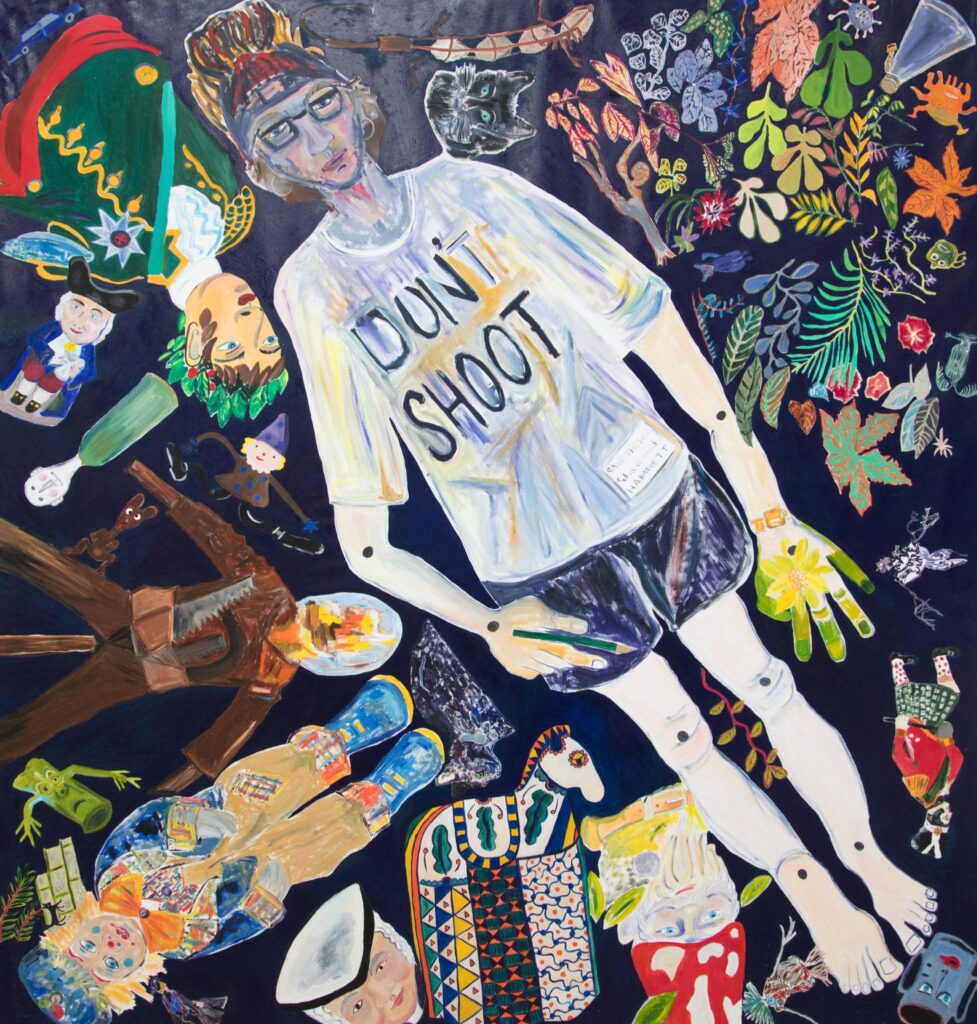

Oil on Primed Cotton
190 x 200cm 2023
Image courtesy of the artist © Tina Jane Hatton-Gore
Photo credit Shane Berkery @shaneberkery and Kirti Virmani @kirtivirmani8
Can you share some early moments from your journey into the arts and explain what inspired you to pursue the path of an artist?
Tina Jane Hatton-Gore: School. I sat in the back of the art class, thinking I wouldn’t mind being an Art Teacher. That’s what I did for twenty years and was constantly inspired by the students. I was lucky enough to be taught by Paul Dash, of the Windrush generation, at Goldsmiths, who told us “You don’t have to give up your practice when you teach.
I used to come home after a hard day in school and paint all evening”. That’s exactly what I did, paint all weekend! I have enjoyed the journey, collaborating with other artists, life drawing, group exhibitions and now Instagram! I am looking forward to having my work exhibited in London’s Mayfair and hope to be represented by a gallery on an ongoing basis.
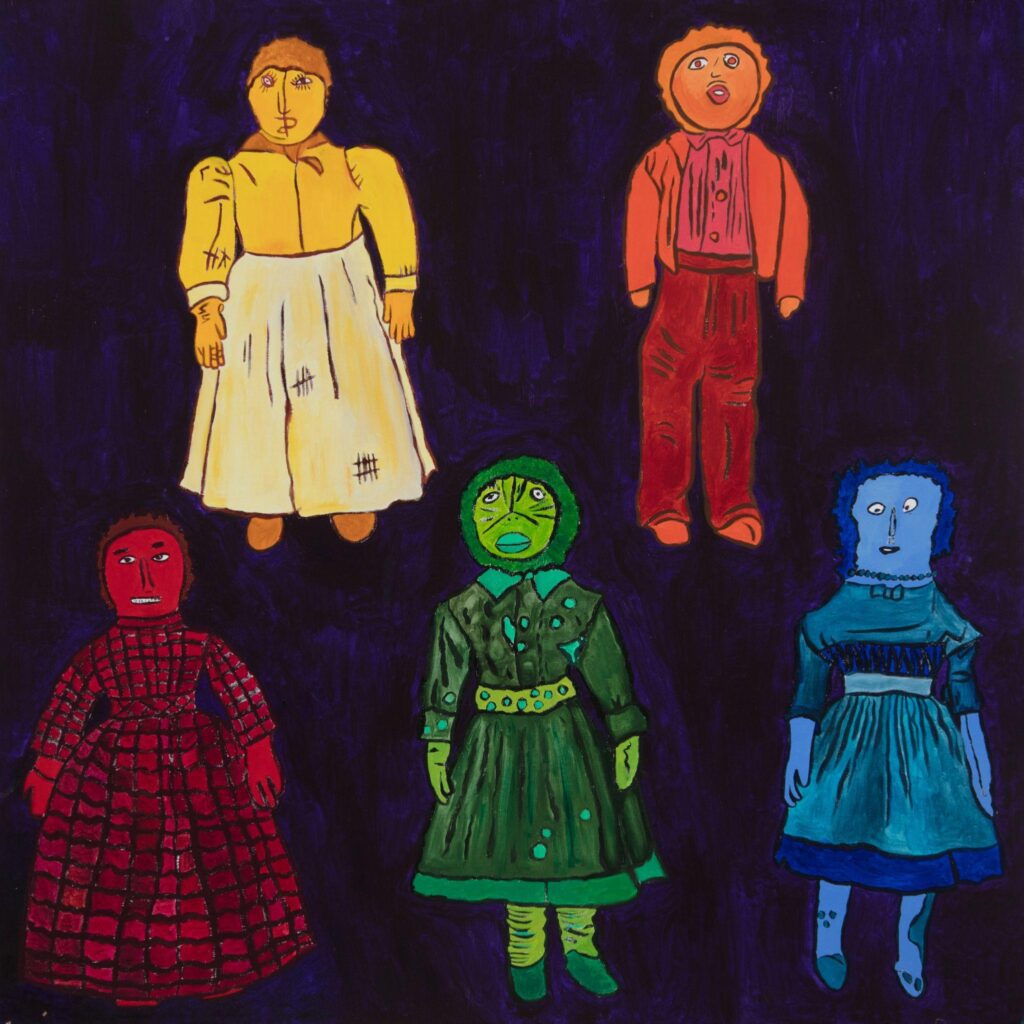

Photo credit Shane Berkery @shaneberkery and Kirti Virmani @kirtivirmani8
Through your practice, you frequently explore the boundary between life and non-life using everyday objects like garden gnomes and scarecrows. Could you delve into your inspiration and share any specific influences or events that drew you to this theme?
Tina Jane Hatton-Gore: During lockdown, I was completing a Masters in Illustration at Camberwell and spent five months oil painting, placing my researched scarecrow images into observed corners of my garden. Later, these scarecrows, naturally lending themselves to the theme of isolation and desolation the WHOLE WORLD was experiencing, were grouped together in landscape views close to my home, including a valley, a coastal landscape and a starry night. In this way, the inanimate figures shifted towards a life and a community.
In 2022, I completed the Graduate Diploma at the Royal College of Art. One of the projects was entitled Artefact. I had previously drawn Toby jugs as part of still-life set-ups around the house and realised that I had collected these as a child. There is a fascination with the hollow head and the fact that this one character has been locked in a fixed seated position since the eighteenth century.
Both my partner, Ken, and I enjoy posing as these characters. I then moved on to researching eighteenth-century nautical figureheads, often the last remaining piece of a massive sailing boat, now preserved in private collections or museums. Evidence that the aura of a human lookalike is automatically taken care of by live humans, just in case!
While looking at dolls and ventriloquist dummies more recently, I came across a pair of eighteenth-century nutcrackers, both ugly but touching, bearing a physical resemblance to the more recent ventriloquist dolls, who can speak the truth that others daren’t. I purchased a mechanical and musical clown at a country fair last year, sparking an exploration of clowns and marionettes. Clowns represent a masking of reality with pastiche, while puppets hover between coming alive, and being dead.
I find the slightly taboo nature of garden gnomes interesting. People generally hide these in the back garden, preferring not to broadcast their obsession to those who pass the front of their house. Where is the line delineating acceptable kitsch from bad taste? I like to push the boundaries of acceptability while still making unattractive options more accessible.
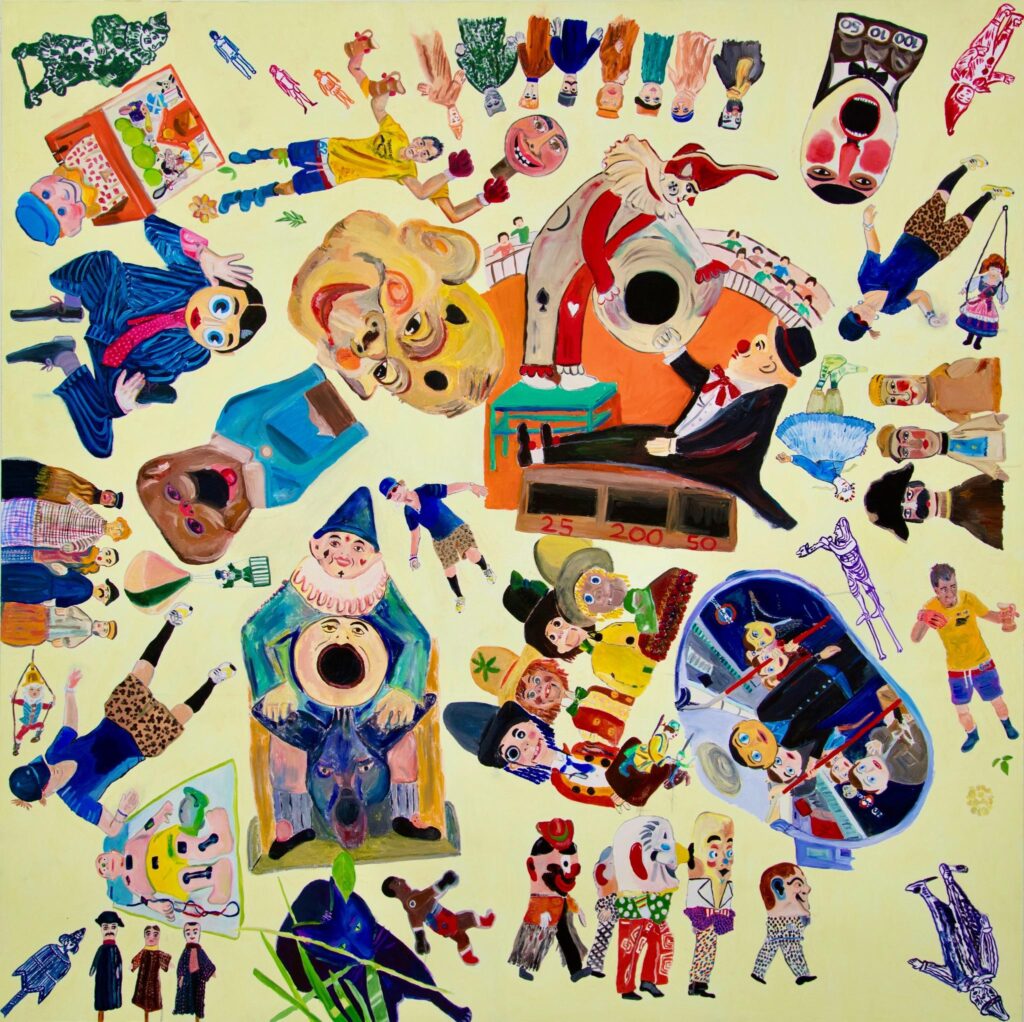

Oil on canvas 200 x 200 cm 2023
Photo credit Shane Berkery @shaneberkery and Kirti Virmani @kirtivirmani8
You have expressed a deep fascination with the concepts of life and non-life, as well as the animate and the inanimate. What draws you to these themes, and why do you find them particularly compelling in your artistic exploration?
Tina Jane Hatton-Gore: Humans have a natural urge to collect. This becomes socially acceptable when referred to as archiving, less so when seen as hoarding. It is a natural human instinct akin to nesting and even reproducing. Finding more than one vintage artefact with both similarities and differences sparks our interest, just as we are constantly seeking to connect with other people who are like us, but also different enough to inspire and excite us.
On a practical level, still life is a reliable way to practice drawing and painting. Combine this with a love of life drawing, especially portraiture, and the spark to fuse the two genres was lit.
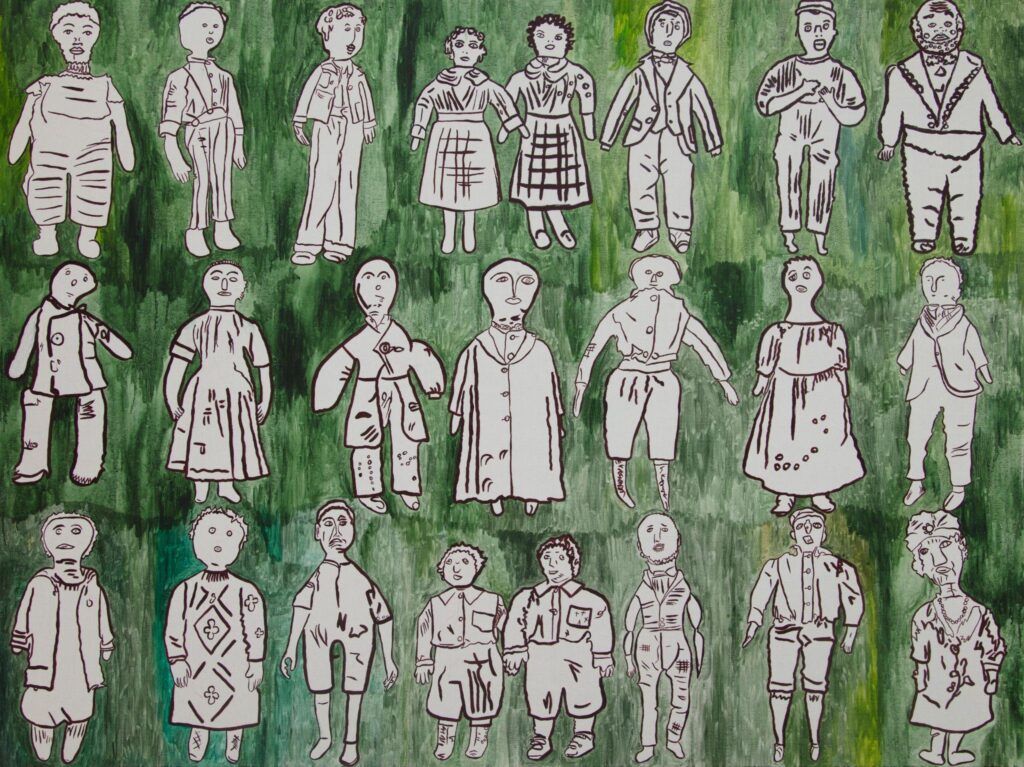

Photo credit Shane Berkery @shaneberkery and Kirti Virmani @kirtivirmani8
Building on that, what connects these diverse objects under the theme of the animate versus the inanimate in your work?
Tina Jane Hatton-Gore: I see the theme of the interface between life and non-life as an ongoing project with new players in the theatre being added for a season and then being archived. There are always others waiting in the wings for their moment of glory. The concept will hover around in the back of my mind and studio. Once I carry out extensive research, one or two images will excite me with that elusive gut feeling, then I am away.
I like to push the theme into new directions and enjoy both repeating and inverting my characters. The element of narrative is important both across and within paintings. The idea is that the inanimate objects will come alive, and the human can take a step back to reconsider their position and values.


Photo credit Shane Berkery @shaneberkery and Kirti Virmani @kirtivirmani8
Your distinctive graphic aesthetic is a hallmark of your work. How does this style contribute to or enhance the narrative you wish to convey about life and non-life?
Tina Jane Hatton-Gore: Drawing is at the heart of my work, if that is not right, I will not continue. I always start a drawing of the figure with the face. I start the face with the eyes. This is where life shines through, even in imagery. The idea is to bring the inanimate object to life and allow the human to sit in their world, not vice versa. The trick is to paint just enough to show the life within, not so much that you obscure the aura.


Photo credit Shane Berkery @shaneberkery and Kirti Virmani @kirtivirmani8
How do you envision the interaction between the viewers and your works? Is there a particular reaction or engagement you aim to provoke in your audience?
Tina Jane Hatton-Gore: My first desire is for the audience to enjoy the work, be fascinated, curious, enthralled. The work is designed to be accessible and immersive. I enjoy interacting with viewers in front of the work, as I see it as an installation. It’s Chile Out There has four cut-out sculptures which have jumped out of the painting, giving a drop shadow effect. My own image appears there too, in the Chile desert with a giant cactus, fifteen years ago. During the Royal College of Art Painting show, I often offered to pose with the work. Bloggers, influencers and children alike shared the illusion that the dolls were alive, humans in their world, not the other way round.
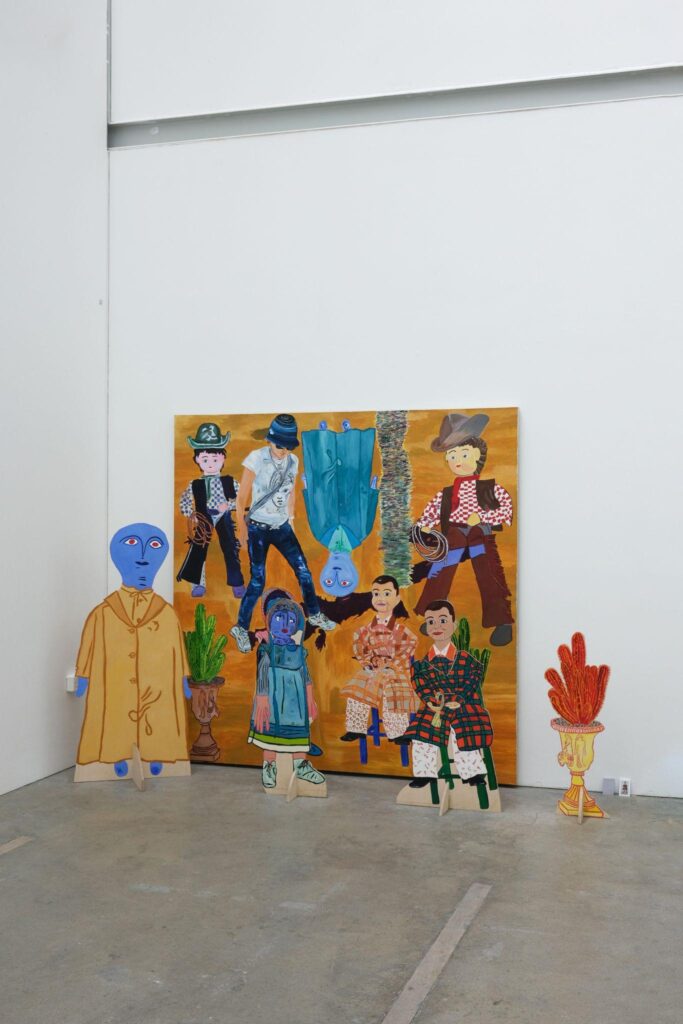

Photo credit Shane Berkery @shaneberkery and Kirti Virmani @kirtivirmani8
There is a strong undercurrent of loneliness and abandonment in your work, particularly evident in the objects you depict. How do these elements help you reflect on and express broader human experiences of loneliness and abandonment?
Tina Jane Hatton-Gore: The theme of loneliness and isolation began while looking at scarecrows but also refers to Toby Jugs knocking around car boot sales, garden gnomes left out in the cold, dolls exiled to the attic, a ventriloquist dummy with no-one to move his lips. We can all relate to these scenarios, something to fear and avoid. In contrast, these artefacts also keep us company, somehow fulfilling the role of companion or guardian.


Cut Out sculpture as Drop Shadow
Photo credit Shane Berkery @shaneberkery and Kirti Virmani @kirtivirmani8
Looking forward, are there new themes or objects you are interested in exploring? How do you see your current themes and practice evolving?
Tina Jane Hatton-Gore: My current thought process is developing the theme of inside outside, a wax doll in a box, what else is in there with her, will she ever get out? The interface between life and non-life might include examining cadavers, zombies, taxidermy, topiary, chimeras, ghosts, robots, mechanical toys. Looking at ancient mummies and understanding how a painting can bring someone back to life is another line of enquiry.
I will continue working on linen and enjoy stretching this on stretchers I have made myself. One of the reasons I like to work in this way is that the painting becomes an artefact in its own right. The substrate is two-dimensional, but once that four-centimetre wooden boundary is added, an object is born. I am fascinated by the enduring life within wood and also drawn to wax as a medium for sculpture. Wax is a unique material that always returns its original form. Natural materials speak to the forms they are modelled in. I will continue to add a three-dimensional element to my paintings using these materials.


Oil on Linen 2024
Photo credit Shane Berkery @shaneberkery and Kirti Virmani @kirtivirmani8
Lastly, could you share the philosophy that guides your art? How do you understand the core importance of art in your life and career?
Tina Jane Hatton-Gore: Just as I tell my yoga students: “Yoga is magic, it cures all ills”, so too Art is a beautiful experience. To be able to express yourself, and give a bit of yourself to the world, without asking for anything in return is a wonderful feeling and very rewarding. I paint for myself but I am chuffed when other people “get it”!
My main philosophy is that we are all artists, and simply have to go with our own way of working, rather than trying to imitate the work of others. If it feels good, if you feel that you are learning, burning, in the zone, you are onto a winner!
When I see or create an image that makes me laugh, giving me a dancing sensation in my stomach, I know it is right! In a sense, Art is the only thing that matters. Once the painting is on its natural trajectory, everything else will fall into place. There is always a slightly uncomfortable stage, while you work out the direction the work needs to go in. Once that barrier is crossed, the sky’s the limit!
This was emerging artist Tina Jane Hatton-Gore. To keep up to date with her work and exhibitions, head over to the Instagram link below.
©2024 Tina Jane Hatton-Gore


